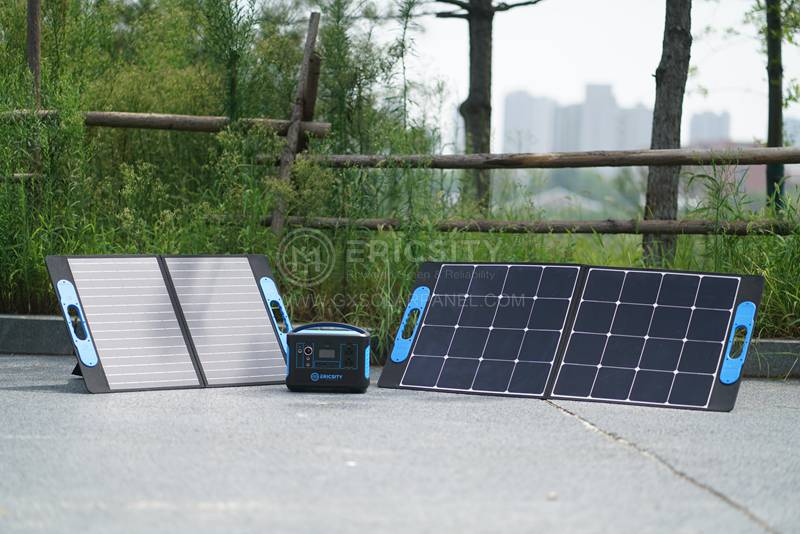HOT PRODUCT
Product Details
exploring The Advantages Of Amorphous Flexible Solar Panels
Exploring The Advantages Of Amorphous Flexible Solar Panels
Solar energy has gained significant attention as a clean and renewable source of power. As technology advances, the efficiency and versatility of solar panels have greatly improved. One such innovation is amorphous flexible solar panels, which offer several advantages over traditional rigid panels. In this article, we will delve into the benefits of amorphous flexible solar panels and how they are shaping the future of solar energy.

Amorphous flexible solar panels, also known as thin-film solar panels, are made by depositing a thin layer of photovoltaic material onto a flexible substrate. Unlike conventional crystalline solar panels, they do not use rigid silicon wafers. Instead, they utilize materials like amorphous silicon, cadmium telluride, or copper indium gallium selenide. This unique composition makes them lightweight, thin, and extremely flexible.
One of the main advantages of amorphous flexible solar panels is their ability to conform to various surfaces and shapes. Unlike rigid panels, which require a flat and sturdy surface, flexible panels can be installed on curved or irregular surfaces, including vehicles, boats, and even tents. This opens up a wide range of applications, making solar energy accessible in diverse settings.
Furthermore, the lightweight nature of amorphous flexible solar panels makes them highly portable. They can be easily folded or rolled up, allowing for convenient transportation and storage. This portability enables mobile power solutions, such as portable solar chargers for outdoor activities or disaster relief operations. Additionally, it facilitates the integration of solar energy into everyday items, such as backpacks or clothing, enabling individuals to harness solar power on the go.
In terms of efficiency, amorphous flexible solar panels have unique properties that make them advantageous in certain scenarios. Unlike crystalline panels, which require direct sunlight to perform optimally, thin-film panels can generate electricity even in low-light conditions or when partially shaded. This characteristic, known as low-light or shaded area performance, is particularly valuable in environments with frequent cloud cover or limited sun exposure.

Moreover, amorphous flexible solar panels have a better temperature coefficient than crystalline panels. This means that their efficiency decreases less as temperatures rise. In hot climates, where solar panels may overheat, thin-film panels are more resilient and can maintain higher output levels. This temperature tolerance ensures consistent performance and maximizes energy production during peak demand periods.
Another advantage of amorphous flexible solar panels lies in their durability. The absence of rigid components, such as fragile silicon wafers, makes them less prone to cracking or damage from impacts or vibrations. Additionally, their flexibility allows them to withstand bending or twisting without impairing their functionality. This durability makes them suitable for applications where panels might be subject to mechanical stress, such as in building-integrated deployments or on vehicles traveling over rough terrain.
Furthermore, amorphous flexible solar panels have a relatively low manufacturing cost compared to crystalline panels. The thin-film deposition process is less resource-intensive, requiring less material and energy input. This, combined with their potential for large-scale production, makes thin-film panels a cost-effective option for solar energy installations. As technology improves and economies of scale are realized, the cost disparity between amorphous flexible panels and traditional panels is likely to narrow even further.

In summary, amorphous flexible solar panels offer numerous advantages over traditional rigid panels. Their flexibility and lightweight nature allow for easy installation on various surfaces, while their portability enables mobile power solutions. The ability to generate electricity in low-light conditions and their enhanced temperature tolerance make them highly efficient in specific settings. Additionally, their durability and lower manufacturing cost contribute to their viability as a reliable and cost-effective option for solar energy generation.
As the world continues to embrace renewable energy sources, amorphous flexible solar panels are revolutionizing solar power generation. Their unique features expand the possibilities for solar energy integration, making it more accessible and adaptable to various environments. The future of amorphous flexible solar panels seems bright, as they unlock new opportunities for sustainable energy generation worldwide.




